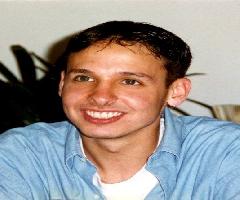Addressing Teacher Retention at The Urban Assembly School for Applied Math and Science
Anyone involved in the hiring of teachers knows full well all the time and effort that is put in to recruiting and attract promising young teachers. In New York City, the same people are also aware of the possibility of being hit with a statistic such as the following. “We lost 33% of our hires last year,” says Roony Vizcaino, dean of The Urban Assembly School for Applied Math and Science. Presenting on behalf of Cahn Fellow Cohort Ken Baum, administration realized that effective recruiting means little
AMS began with the structure of Teacher meetings. Cutting out all the conversation on, “what that kid did today,” lesson plans took front and center this year. What worked today, what didn’t and what are we going to do tomorrow, said Mr. Vizcaino of their new baseline.
Of course, when lesson plans only get their final touches on the Q-line, new teachers can easily whittle under the demands they face as student teachers. You get out of work, go to school, finally get home and now you have to come up with a lesson, he says.
In response, AMS put a veteran teacher in charge of team meetings, where lessons could be discussed and developed during the school day. Additionally, the team leader sat in on student teacher classrooms so later meetings consisted of discourse that was appropriately relevant to coming up with plans.
As for the larger grade level meetings, AMS cut them back to once a month and now consist less of raising problems than bringing solutions. Having the agenda laid out a week in advance, their Rapid Solution Response had teachers doing just that instead of waiting to be assigned modification strategies.
But no matter how well teachers adapt to their new environment, they likely carry a large gap in regards to the politics of education. There are numerous things they don’t understand so we not only explain the things happening in the school, but it helps develop a good deal of collegiality among staff, he says.
Sticking with that sentiment, Mr. Vizcaino recognized the importance of formally upping the ante on letting all the
work related stress hang loose. It’s important to just get together and throw down with a camping trip or a friendly square off at the bowling alley, he says.Fun and games aside, the real work began with a closer look at the Special Education Department, where the majority of changeover was occurring. It was arrived upon that the Collaborative Team Teaching Approach of putting 10 Special Education students in classes of 28 was not the appropriate ratio.
Furthermore, the synergy was also wrong – even with two teachers in each room. First of all, he says, you have to have two teachers that get along, and in New York City, that itself is a challenge.
Additionally, the workload usually got divided along the lines of instructional and behavioral. “It wasn’t equal,” he says, and coupling that with high turnover, the curriculum could more easily be lost to the lack of continuity.
Taking into account over 100 significant incidents, AMS instituted Reduced Class Staff and Support (RCSS). In other words, they more thinly spread Special Ed students throughout each grade, while still providing the one on one attention that is needed.
As a by product, the Special Ed student saw less of his peers in the classroom and the competition for attention among them naturally diminished. Resultantly, he believes, this help translate to less incidents.
Ultimately, the actual results on retention have obviously not revealed themselves yet, but he credits the implementation to putting aside the old model of generating solutions and attaining the necessary focus from advice he took in from Cahn. “One can lead with no more than a questioning hand,” he relayed.
Sitting today with a set of answers from those queries, he believes teacher surveys indicate that this September will be different, but he’d rather point elsewhere for what’s in store. With a whole lot of smiles in our building, I feel we are going to retain most of our teachers, he concludes.


